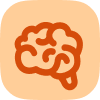Have you ever picked up your phone to check a text and, 45 minutes later, found yourself deep into a video rabbit hole, forgetting why you even started? You’re not alone. As digital devices become extensions of our bodies, our brains adapt in ways that may not be entirely beneficial. What many are now calling “Digital ADHD” isn’t a clinical diagnosis, but it reflects a real and growing problem: our attention systems are being hijacked by constant interruptions.
Notifications, pop-ups, buzzes, and pings are rewiring our neural pathways. Over time, these micro-distractions erode our ability to focus, regulate impulses, and think deeply. Understanding what’s happening inside your brain is the first step toward regaining control and rewiring it for clarity instead of chaos.
The Neurochemistry of Distraction: How Notifications Shape Your Mind
Every time you receive a notification, your brain lights up with a minor hit of dopamine, the neurotransmitter responsible for pleasure, motivation, and reward. While this was once an evolutionary advantage, in today’s hyper-connected world, it’s a vulnerability.
As reported in Very Big Brain, “Every buzz, ding, or ping from your device activates your brain’s reward system, triggering a release of dopamine that makes you want to check your phone again—and again.”
These quick hits of satisfaction condition your brain to expect frequent stimulation. The result? A diminished tolerance for stillness, boredom, or deep focus. Just like a muscle, your attention weakens with misuse.
This pattern closely mimics what we see in traditional ADHD symptoms: impulsivity, difficulty sustaining attention, and a tendency to seek novelty. While digital ADHD is not identical to the clinical condition, its effects on concentration and self-regulation are remarkably similar, and growing more common in both children and adults.
Can You Rewire Your Brain for Focus?
Thankfully, the same neuroplasticity that allows for distraction also enables recovery. With conscious effort, you can retrain your brain to favor depth over speed and intention over impulse.
Dr. Gloria Mark, a psychologist at UC Irvine who studies attention in the digital age, explains in an APA article that “We’ve measured that people now switch attention every 47 seconds on average. It can take over 25 minutes to fully return to the original task after being interrupted.”
That kind of mental fragmentation comes at a steep cost, not just to productivity but also to cognitive health. But studies show that attention can be restored, not through willpower alone but through strategic habits and mental training.
Simple steps include:
-
Turning off non-essential notifications to reduce reactive checking.
-
Setting time blocks for deep work and rewarding the brain afterward.
-
Practicing mindfulness to build cognitive control and awareness of attention shifts.
This is where the Infinite Mind App plays a subtle, supportive role. With short, science-backed exercises designed to strengthen working memory, enhance focus, and encourage present-moment awareness, the app helps you gently rewire your brain. Not by removing the tech, but by changing your relationship with it.
Less Buzz, More Clarity
We live in a world where distractions are engineered, persistent, and profitable. But your attention doesn’t have to be for sale. With knowledge, intention, and daily practice, it’s possible to rewire your brain for clarity, focus, and cognitive resilience, even in a notification-heavy world.
If you're ready to take that first step, the Infinite Mind App offers a quiet alternative to chaos, a daily space where your brain can reset, recalibrate, and reclaim control.














